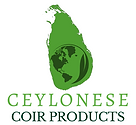
What's Coconut Coir ?
Coconut coir is also known as cocopeat Coir dust and it is a byproduct gained during the extraction of Coir Fiber from coconut husk. It is purely a natural organic product. It is a natural, unique, spongy cellulose organic plant growing medium usable in garden centers, horticulture, and nurseries. Coco peat has a high pore space of soil and air-filled porosity of 10% and it can be easily wetted and re-wetted. Coco Peat is subject to washing, sieving, and drying before being converted into the final product. It is pressed into different block sizes in accordance with customer requirements and then shipped to requisite buyers. Today coco growing mediums have become one of the most sought-after and versatile growing mediums that can be applied to any plant both in Horticulture & floriculture.
FULLY MATURED
COCONUTS
COCONUT HUSKS
COCONUT HUSKS
CHIPS
COCONUT
FIBER / COIR
COCOPEAT
WHAT MAKES COCONUT COIR AN IDEAL SOILESS GROWING SUBSTITUTE ;
Water Retention
The best thing about coco coir is its ability to hold water 10 times its weight, thus making it a popular additive for hanging baskets, container plants, potting soils.
Not only this, but it is also capable of being a standalone growing medium in hydroponic growing setups where it can last up to 3 times longer than traditional sphagnum peat moss.
Aeration and Drainage
Coco coir possesses excellent aeration properties, which are important for a soilless growing medium. When it is added to the soil, it creates small air pockets that provide roots with access to air, water, and essential nutrients. In doing so, the air pockets promote stronger root growth and better health overall and, therefore, more vibrant plants.
Not only this, but air pockets created by coco coir are also responsible for promoting proper water drainage. The plant root may drown if a plant cannot drain properly, resulting in soil erosion or soil compaction.
Neutral pH
Each plant has an ideal pH level. Generally, the pH of the soil has a significant impact on the availability of essential nutrients. A pH of 7 is neutral and unlike other soil additives, coco coir has a nearly neutral pH that ranges from 6.7 to 7. Anything lower is acidic, while anything above is alkaline.
Nutrients
Coco coir is filled with a high amount of essential plant growth nutrients and small amounts of calcium, magnesium, and potassium. On top of it, coco coir often holds onto vital nutrients. This is why most growers choose to modify their soil with a mix of coco coir nutrients.
Sustainable
The main reason behind choosing coco coir as a growing medium for many growers is because it is a renewable resource. In general, coconut trees are capable of generating as many as 150 coconuts per year. During harvests, the coconut palms are not damaged, and therefore, being the byproduct of these harvests, it prevents the waste of otherwise unwanted materials.
Instead of coco coir, many hydroponic growers choose to use peat moss. However, peat moss tends to break down faster than its counterpart. Furthermore, peat moss is derived from vulnerable peat bogs and takes around 25 years to completely restore a peat bog.
Eliminates Harmful Bacteria
Coconut fibers have natural defenders that resist the growth of harmful bacteria, rot, and fungus. The neutral pH of the coconut coir makes it a harmful base for the microorganisms to survive in it.
Reusable
Some gardeners prefer reusing their coconut peat as it can help them in saving money. Although reused coir is more susceptible to diseases, however, it’s very easy to use and also environmentally friendly.
While coco coir is compostable, it takes near about 25 years to completely break down. Additionally, it is better to use it as long as you can before throwing it in your food waste pile.
DIFFERENCE BETWEEN COCOPEAT & COCONUT COIR
Raw material:
Coco peat (It is also known as Coco pith) is made from the husks of coconuts, while coco coir is made from the fibers of coconuts.
Drainage and aeration:
Coco peat is more absorbent than coco coir and holds more water, making it better for plants that need more water. Coco coir is beneficial as it has better drainage and aeration properties.
Cation Exchange capacity:
Coco coir is more resistant to mold and has a higher cation exchange capacity, making it better for plants that need more nutrients.
Texture :
Coco peat is light and fluffy, while coco coir is coarse and fibrous.
Color:
Coco peat is usually white or light brown, while coco coir is brown or reddish-brown.
pH levels:
Coco peat is neutral, while coco coir is slightly acidic.
